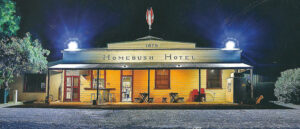Here we are in Mungo National Park. The power is off. My computer needs re-charging. Thus, after this sentence, there will be a lull. Transmission will resume after we get to Balranald.
When you write something as disconnected as that, there must be what they call in the trade a prequel, and there must be a postscript as well.
But first, the scene should be set for both.
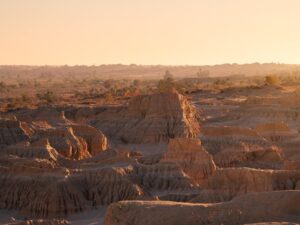
Mungo National Park was the site of an ancient lake, Lake Willandra, dry saltbush expanse disappearing into the horizon. On one side of this lake is a long stretch of dunes caused by the winds blowing the sand and grit into have termed “The Walls of China”. There has been differential erosion across these dunes leaving a series of obelisks in the sand. They are a small version of the famous Pinnacles in Western Australia.
I first drove around Mungo National Park 30 years ago. The Park had been given WHO Heritage status in 1981, the remains of the modern Indigenous Australian man, at least 40,000 years old, were discovered in the Willandra Lakes in 1974, with the remains of a perhaps equally ancient female having been discovered in 1968. They were labelled Mungo Man and Mungo Lady.
The bones have languished in Canberra, until Mungo Lady was returned “to country”, and is kept under lock and key in the Visitor Centre while a suitable burial site could be designated. Thirty years have passed. The then Minister of the Environment in May this year gave permission for reburial. Having been given the gravedigger role, the NSW Government has baulked.
Meanwhile Mungo Man’s remains await, to be interred in an ancient river red gum box.
The Paakantji, Mutthi Mutthi and Ngiyampaa share the land, saying their people have effectively been there forever – well for at least 40,000 years, but when I first went to Mungo, there was not much evidence of their occupation. One could freely drive around the Walls of China; you could walk around the ancient site without the benefit of an Aboriginal guide. Sensitivity towards these lands did not require a boardwalk. The country was full of kangaroos; this time there was not one to be seen.
Then there was a seasonal Lodge at the entry to the Park, where you could stay, except during the summer months, and water was at a premium. Today, there is a renovated Lodge, well set up with cabins clustered around the administrative and dining facilities. The highlight of the evening meal was the rack of lamb; after all, in the land of sheep in the saltbush, how glorious was the taste of a very generous serving. We agreed that it was the best lamb we had eaten since one memorable meal at Wanaka in the altoplano area of the South Island of New Zealand, where Canterbury lamb is raised, and until this Mungo experience was the most succulent lamb meal.
Strange, in search of an Aboriginal masterpiece, it was the product of imported fauna which provided the most memorable experience, apart from the cold which, although not unexpected, when combined with a wind chill factor pushed the thermometer well below zero.
As the reader may discern, I was disappointed being locked out of the self-drive tour, and there were suggestions that a sunset tour with two adults and two children at $200 was expensive, but then life is not cheap when you stay in the Park.
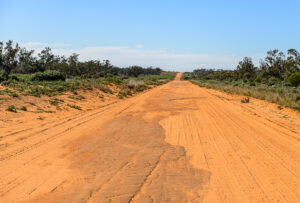
Although it is stated that there is no need for a four-wheel drive, some parts of the road to Balranald were, as they say, challenging, especially as it seemed not to have been graded after the floods, and deep dried ruts dotted the roads and in the sandy areas, the bull dust concealed potholes in the road. On the other side of the coin, the asphalt roads are creeping outwards, especially where mining interests are concerned. On reaching the junction with the Balranald-Ivanhoe road, I was surprised by this newly sealed road.
Why? Mining means improved access.
Mineral sands mines had been opened 175km south–west of Ivanhoe. The heavy mineral concentrate (HMC) from the mine is trucked to a new rail siding just outside of Ivanhoe, then transported to Broken Hill for further processing. Unsealed roads used to go in all directions from Ivanhoe, which existed as a place where the rail fettlers lived and where once the Indian Pacific stopped at 3am to let me get off. If you want to emulate that feat just remember the station is approximately a mile from town – and there are no taxis.
There you are, the future of the NSW Far West, tourism and mining, not forgetting the traditional overlay of cattle and sheep. Just setting the scene.
The Prequel
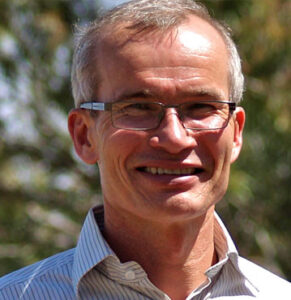
We had been invited to a farewell of Professor David Lyle who, for the past 27 years, has headed the first University Department of Rural Health (URDH) created in Broken Hill. The concept was bitterly opposed at first by some elements of the Federal Department of Health and certain then influential general practitioners. The brainchild of these university departments of rural health was Dr Sue Morey, then the NSW Chief Health Officer, who believed that teaching of medical students should be available in a structured rural facility and should have a strong public health component with equally robust community involvement. Sue delegated me to sort out the structural barriers and importantly secure local involvement. As it turned out, Clyde Thomson, the remarkable CEO of the local Royal Flying Doctor Service, was that person. I have written extensively about Clyde elsewhere and it is about time that his status of being a “national treasure” is fully recognised.
Clyde trained as a pilot, but he grasped very clearly what we were about and how an air transport facility, an almost untouchable icon delivering emergency medical care to the outback, could be further broadened to be an integral part of the clinical life of the community, including most tellingly of the Aboriginal people. Clyde embraced the ideas and demonstrated very clearly the essential need for a “local champion” to work in the planning and implementation.
Although Clyde was Chair of the Hospital Board at the time and a university department of rural health being attached to the local hospital seemed an attractive option – in this case we avoided the danger of parochialism in that even if it were considered successful, there would always be a number of reasons advanced that a “Broken Hill Department of Rural Health” would not be a generalisable model.
Also, medical education at an undergraduate level is the preserve of universities in Australia. We decided that despite a locational problem, the University of Sydney should be invited to participate in the project. At the time university medical school thinking about having a rural component was to have it located on a campus on the outskirts of Sydney, not 1,200 kilometres away in a mining town which was closer to Adelaide.
Crucially, Broken Hill was located in NSW. As time went by, the rural involvement of the University of Sydney moved towards Sydney to Dubbo, then to Orange, over a number of years. This would have been impossible if Broken Hill had been linked to one of South Australian Medical schools, which initially appeared to be the easy option given Broken Hill’s medical relationship with Adelaide, but would have assured failure. There was some academic resistance in University of Sydney Medical School; it was overcome. The Dean, Steve Leeder, helped – a crucial ally.
I was asked to do a Rural Stocktake across Australia by the Department of Health in 1999, and I reported early in 2000.
There is no doubt that Minister Michael Wooldridge’s dedication to rural health improvement drove implementation, in particular securing funding for the program in the 2000 Federal Budget, which was distributed to universities with medical schools, with the proviso that the Universities could not skim any of the funding for “administrative expenses”. All the funding went to the various programs.
The final keystone for this Broken Hill project was David Lyle. He is a public health physician who had been involved, even before his appointment, in determining the extent of lead poisoning in the children of Broken Hill. He has always had a reputation as a great teacher, and ensured that his URDH was expanded to embrace other health professionals, including Aboriginal Health workers.
He oversaw the conversion of disused wards at the back of the hospital into a tangible Department and attracted a significant amount of research funding. There are now 19 UDRHs across the country, and the fact that David, until now, has been the unmovable champion and therefore crucial in the growth of rural training of health professionals, including public health.
His replacement has yet to be named and the University of Sydney advertisement suggested that the office would be based in Camden, where apparently the university has some agricultural facility, such is the systemic idiocy in the university bureaucracy. There is a problem among medical deans where there is an obsession about ranking, largely determined by research citations. Most of the medical deans have had professional careers within academic cloisters where the sun of rural Australia doesn’t shine. It is alleged that rural health money is taken and strewn around the city campuses.
This response by the University of Sydney indicates the bane on any program – lack of corporate memory without a record of the genesis of the program.
David Lyle must leave a written legacy or podcasts to ensure that 27 years of experience is not lost, given he is the last of the original heads of the URDHs.
The Postscript – What’s in a Name!
Years ago, I was asked to review an alleged problem in the delivery of medical care at Hopetoun. Hopetoun is a small township just South of Wyperfield National Park – an area of mallee desert country which lies in the far north-west of Victoria. During my time there, a case of a pregnant woman with no access to ante-natal care, was raised with me.
It was an anecdote raised in passing as an example of the general lack of access to medical care. Strangely over the years the name of this tiny place, Lascelles, has stuck in my mind.
This week we were returning from Broken Hill and decided to go across to Victorian border to visit the pink lake, Lake Tyrrell. Because of its colour, it has become a destination for Chinese tourists because of their association of pink with luck. When we visited the wind was blowing and sun was reflected from the water against a cloudless sky. You could pick out fragmentary pink colours in the shaded areas of the lake, but there is a far better pink lake in the South Australian Coorong. Anyway, Lake Tyrrell has put the Mallee town of Sea Lake on the map, but also on the map has been inserted the Silo Art Trail. Many of the silos in the district have murals painted on them. One of these silos was at Lascelles and at Sea Lake there was a signpost to Lascelles.
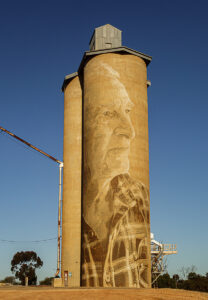
The signpost evoked my memory of the name. I thought that it was a speck even further into the bush than Hopetoun, but for the first time I could put a face on this hamlet, where the major medical centres of Mildura and Bendigo were about two hours away. Lascelles is a pub and a few homes and on the silo wall there were beautifully painted, in sepia tones, portraits of a farming couple, the Hormans.
That is the endemic problem of small settlements, so small they do not merit any shops, but most do have a pub, a hangover from the time the trains stopped there and now a place for the locals to come and have a drink. The pub is often the only community resource and would be a perfect place for regular clinic by a visiting medical team. As a model, the flying doctor provides the excitement in community by arriving by air. I remember in the 90s flying with the RFDS when they provided medical care at the Noccundra rodeo; and boy is Noccundra remote! Yet a plane on a gibber plain air strip indicates that the doctors and flight nurses have arrived.
Noccundra in Far West Queensland had a permanent population of four, but there was a pub made of stone. The RFDS provides a model for a visiting service, with provision of a regular clinical schedule and being available for outback events such as the rodeos where inevitably there will be injuries, some of which may require evacuation, either to Broken Hill or Adelaide.
There is much discussion about the lack of doctors in the bush. I believe the root cause is that there is no coherent succession planning, but for such planning there needs to be a facility which can appropriately both monitor and supply a regular flow of doctors.
To me all programs of clinical care must have a teaching component to assure the flow, as occurs in teaching hospitals.
Therefore a university facility, whether it be a university department of rural health, rural clinical school or a rural medical school, could provide a regular means of servicing the small communities with clinicians and providing two elements – one: clinical experience and two: continuity.
Much of these ideas have sprung from my own personal experience of providing a visiting medical service. For a number of years when I was newly graduated I would do evening consultations by visiting patients who, for one reason or another, could not present at the rooms for ongoing care. I did it twice a week, and if I encountered any deterioration, I would let the general practitioner know. Here the General practitioner was my educational resource and I went out on my visits -five or six patients generally had to be seen each evening.
The principle is simple – a travelling medical team connected to a teaching centre, where public health is an essential ingredient. As I have found out, if you provide a mixture of collegiality, teaching, recognition and succession planning, then you can build a coherent team of health workers.
Such a concept where you use colourful cars in lieu of aircraft to attract attention as the means of providing a regular service to remote settlements need to have a David Lyle to implement such a simple but obvious concept. But make sure that the travelling band arrives in each township with panache and always come when they said they would -punctually.
Incidentally, there was no problem with the medical care in Hopetoun, but that is another story, but instructive in trusting your on-site observations to strip away the hearsay and gossip.
Sarah Jane Halton and her Stomach Knot
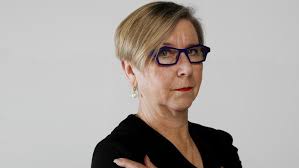 Jane Halton has bobbed up again. The incoming Health Minister, Mark Butler, has asked her to review the existing vaccine contracts and whether the country had a regular source of vaccine supply – a guaranteed pipeline.
Jane Halton has bobbed up again. The incoming Health Minister, Mark Butler, has asked her to review the existing vaccine contracts and whether the country had a regular source of vaccine supply – a guaranteed pipeline.
The background is the dilemma being posed by the surge in the number of cases of the virus and the fact that the new variants seem to be more contagious. The fact that the level of vaccination including boosters has declined and there seems to be a growing complacency in the community with the removal of public health safeguards presumably is driving the review.
His action follows on from a national surge in case numbers, with health department estimates showing around 200,000 people are actively infected. He also confirmed that COVID-19 vaccines for children aged between six months and five years, which have already been approved in the United States, are progressing towards approval in Australia. Pfizer has been granted provisional approval to put in an application to provide a paediatric COVID-19 vaccine.
At the same time the impact of the transmissibility of the new variants BA.4 and BA.5 has introduced another variable, because of the unknown factor around the virulence and the effectiveness of current mRNA vaccines against these variants. That is the problem with mRNA viruses – they are fickle, mutating regularly.
Reading between the lines, Butler wants a “quick and dirty”. Despite what has been provided in the media release, and a comment that he was only interested in the future, the lessons come from the past.
Butler’s appointment of Halton is a shrewd one. She is a Howard-Abbott warrior. Therefore, her appointment has a “Teflon” quality. As a Deputy Secretary in the Department of the Prime Minister and Cabinet, Halton was convener of the People Smuggling Taskforce in the Children Overboard Affair. This was a convenient vehicle for Howard’s scare tactics in relation to the “Boat People”. She was the dummy in believing false claims, but she was rewarded with the post of Department of Health Secretary, where the then Minister, Abbott obviously saw her as a person in his own image and when he became Prime Minister Halton moved upwards into a central agency – that of Finance.
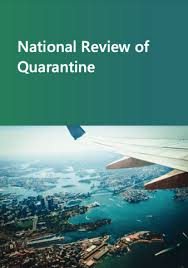 She became a member of the ill-fated Executive Board of the Australian National COVID-19 Coordination Commission in March 2020. That would suggest that she was engaged in the whole sorry process from the start, the entrails of which she has been asked to examine. Maybe she will be able to airbrush any involvement of Sarah Jane Halton from her report to Minister Butler.
She became a member of the ill-fated Executive Board of the Australian National COVID-19 Coordination Commission in March 2020. That would suggest that she was engaged in the whole sorry process from the start, the entrails of which she has been asked to examine. Maybe she will be able to airbrush any involvement of Sarah Jane Halton from her report to Minister Butler.
After all, the Chair of the Commission, Neville Powers was convicted of breaches of COVID-19 rules. Maybe the activities of this Commission will figure in her solution. So far, the only public contribution by Halton as a result of this association was an indifferent report on hotel quarantine.
However, there is no doubt that Halton is an expert on integrity having been a member of the Board of the Crown Casino which presided over a raft of corrupt practices, the criminality of which has not been tested in the Courts. Nevertheless, the former judge Patricia “Paddy” Bergin, who ran the Inquiry on Crown, noted that despite her involvement in some of the deceptive practices, her integrity emerged intact.
James Packer had a business model which relied on an ongoing river of Chinese money replete with all the attendant malfeasance connected with the movement of large amounts of money, including junket tours and money laundering. It seems that ASIC is not prepared to take the matter further – “too big to fail” is the mantra.
Halton is a beneficiary in that the level of her involvement in the shenanigans will not be tested in court. Nor unsurprisingly, this involvement was not mentioned in the Butler media release, where she is described as “a vaccine expert” and Chair of an international organisation – the Coalition for Epidemic Preparedness (CEPI) based in Oslo, which is the brainchild of the Bill & Melinda Gates Foundation and the Government of India. Given the generous description of her as a vaccine expert by the Minister, the published description of the CEPI Board, acknowledges her starkly by a single word “Chair”, a position to which she was re-appointed last year for a further five years. Yet others on the Board are clearly defined as vaccine experts. It is as though the authors of the CEPI Report were unsure why she was there.
I therefore was surprised with the Ministerial comment: “I make no judgment about the existing arrangements. I think it’s entirely appropriate for us to have some independent advice about incredibly important arrangements that we have inherited.”
Excuse me for gagging on “independent”.
Now that ex-Minister Hunt has retired, also excuse me by speculating if there is now one remaining person with a target on his chest. Also let’s hope that she does not get that knot in her stomach – her own shorthand for the times she has stuffed up.
Climate Change
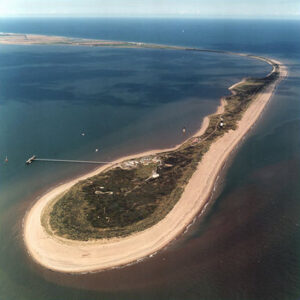
The worst manifestation of this deteriorating climate was the Grote Mandrenke (Great Drowning of Men) of 1362, the greatest North Sea disaster in history which saw up to thirty thousand dead and almost half the population of the marshland districts along the Jutland coast drowned, not to mention the inundation of substantial chunks of the city of Dunwich and the port of Ravenserodd on the North Sea coast of England.
This above excerpt from a newly-published examination of ancient Britain settlement, Shadowlands by Matthew Green describes the changes in the British coastline because of climate change in the early part of the last Millennium. There is the description of Old Winchelsea where, over a period of a hundred years, this settlement – an important port on the Kent coast – was washed away. The intervention of King Edward 1 in acquiring land in the hills above Winchelsea was not without controversy because it meant a shift of Winchelsea being superimposed on existing settlements on this higher land.
These were turbulent times as the Northern Hemisphere moved from a calm Mediaeval Warm Period (c. 900-1200) into the turbulent Little Ice Age (c.1300-1900). During this time, hundreds of settlements on both sides of the Channel were inundated with extensive loss of life.
As Green says, this period was instructive for our time, when climate change is very much in the hands of manmade intervention, which as he says, it is probably much worse than the thirteenth or fourteenth century “ever dreamed up.”
May I suggest that the inhabitants of Lismore and other places that were once ports and which are now being repeatedly flooded, read what happened to this mediaeval port of Winchelsea. It took time but, in the end, the once thriving port of Winchelsea was no more, death from repeated flooding.
Mouse Whisper
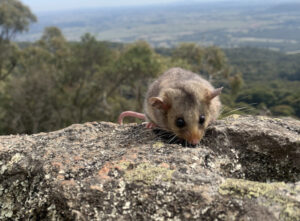 My Bushrat relative, Rafferty, turned up the other day. He had hitched a ride on a number of trucks around the southern part of the Far West of NSW with a mate, Jack Kerourat. Anyway, he said that the Hay Plain was so flat you could see the curvature of the Earth’s surface.
My Bushrat relative, Rafferty, turned up the other day. He had hitched a ride on a number of trucks around the southern part of the Far West of NSW with a mate, Jack Kerourat. Anyway, he said that the Hay Plain was so flat you could see the curvature of the Earth’s surface.
The other thing he mentioned was in the bar of the Penarie pub where he heard one of locals say, “Look mate, you know what a remote place is in Australia. It’s where there’s no TAB betting agency.”
